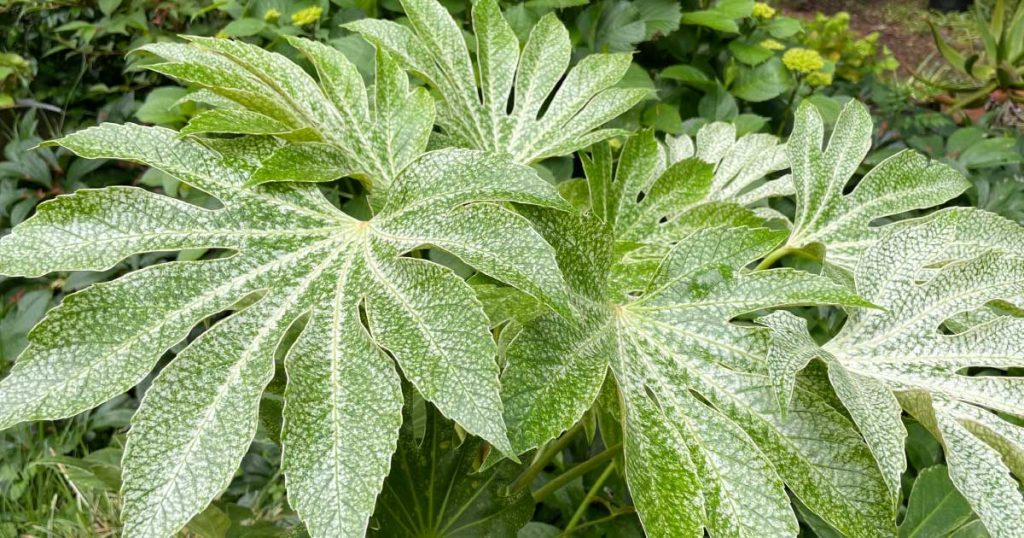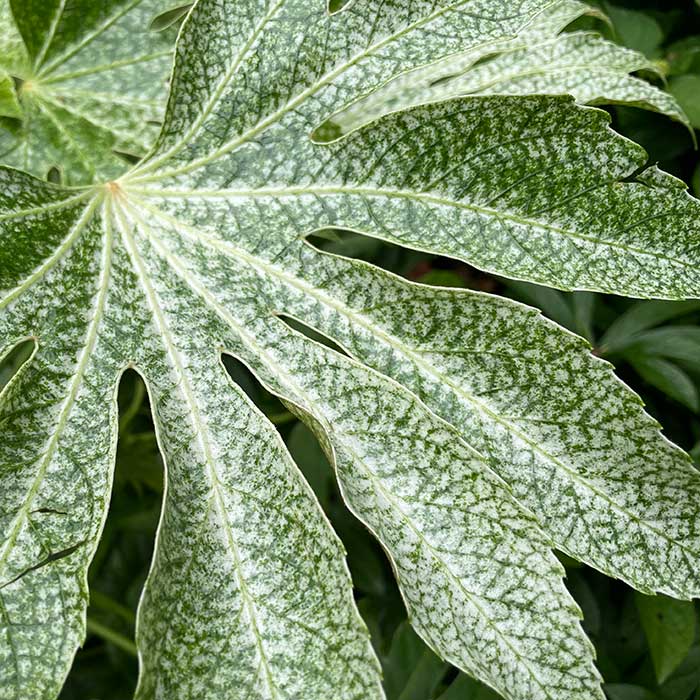A medium sized evergreen shrub, Fatsia japonica ‘Spiders Web’ is grown as a foliage plant. Also known as the Japanese Aralia, the foliage is in the form of broad palmate leaves, and it is the new foliage that is the is the major attraction.

Best described as a pale green variegated and speckled with white, the individual leaves take on a spiders web pattern.
As the leaves age they turn to a deeper green and loose a little of the lustre, however in a shaded position this is a standout foliage plant year round.
Where to grow Fatsia Spiders Web
This is a plant form Southern Japan, so it does not like cold winter climates. So outdoors try USDA ZONE 7 in a protected position more reliably in USDA Zones 7b to 10
The ‘Spiders Web’ will flower as the plant matures, small white flowers on stems above the foliage in fall. These are followed by shinny black berries.
Pruning Fatsia Spiders Web

Left to its own devices the ‘Spiders Web’ plant will form a multi trunked plant to around 6 ft (2m) or more.
In order to make the most of the foliage it is best to prune back the tallest stems at ground level. They will reshoot and give you new foliage closer to eye level.
Summary Care
Light: Best grown in bright filtered light to dappled shade.
Soil: Well draining, moisture retaining – Indoor use a good quality indoor soil mix.
Fertiliser:
In the ground a slow release organic fertiliser in spring before applying mulch.
In containers use a liquid fertilizer every 3 – 4 week from spring through summer.
Watering: A well drained moist soil is best. In containers allow the soil to dry a little between waterings.
Maintenance: Prune away any deep or damaged foliage as it appears.
Flowers: Once plants are established small clusters of tiny white flowers appear on stems above the foliage in autumn/fall.
Propagation of Fatsia Spiders Web
- Propagation is in summer by semi hardwood cuttings.
- You can propagate in water, however propagation in sphagnum moss or similar generally gives better results.
- Take a cutting just below a leaf node, selecting a stem with smaller leaves if possible.
- Wrap the stem in sphagnum moss, place the cutting in a pot and keep moist.

